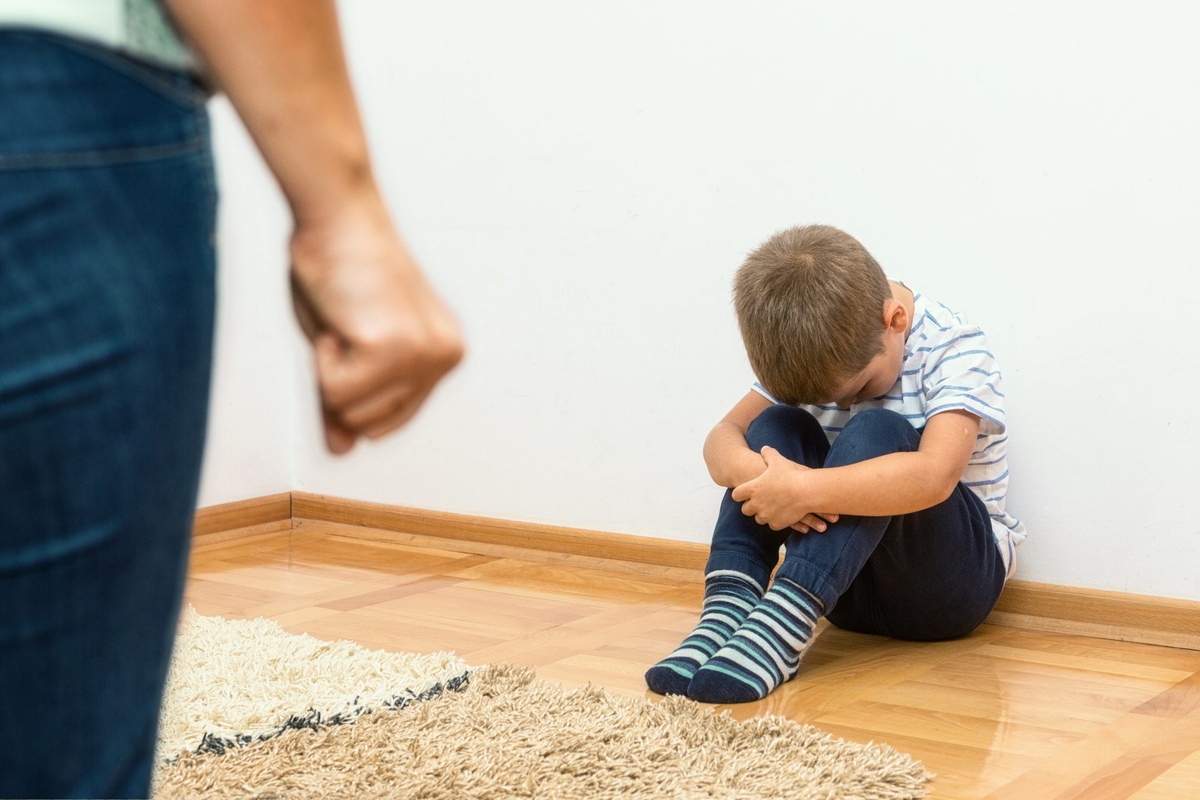Home>Health & Lifestyle>Family & Pet-Friendly Home Design>What Can One Do When Kids Are In A Violent Home Life


Family & Pet-Friendly Home Design
What Can One Do When Kids Are In A Violent Home Life
Published: December 22, 2023
Discover family and pet-friendly home design solutions to create a safe and nurturing environment for kids in a violent home life. Explore practical tips and ideas to transform your home into a sanctuary.
(Many of the links in this article redirect to a specific reviewed product. Your purchase of these products through affiliate links helps to generate commission for Storables.com, at no extra cost. Learn more)
Understanding the Impact of Violence on Children
When children are exposed to violence in the home, the repercussions can be profound and enduring. The impact of such trauma can manifest in various ways, affecting the child’s emotional, psychological, and physical well-being.
Emotional Distress: Witnessing violence between family members can lead to intense emotional distress in children. They may experience fear, anxiety, and a sense of helplessness, which can significantly disrupt their emotional development.
Behavioral Changes: Children exposed to violence may exhibit behavioral changes, such as aggression, withdrawal, or difficulty in forming relationships with peers. These changes can impede their social development and academic performance.
Psychological Effects: The psychological impact of exposure to violence can be profound, leading to symptoms of depression, post-traumatic stress disorder (PTSD), and other mental health issues. These effects can persist into adulthood if not addressed effectively.
Physical Health: The stress and anxiety resulting from living in a violent home can also take a toll on a child’s physical health. They may experience headaches, stomachaches, and other somatic complaints as a result of the chronic stress they endure.
It’s crucial to recognize that the impact of violence on children is not limited to the immediate aftermath of the traumatic events. Rather, it can have enduring effects that shape the child’s development and well-being in the long term.
By understanding the multifaceted impact of violence on children, we can better appreciate the urgency of addressing this issue and providing the necessary support and intervention to mitigate its effects.
Key Takeaways:
- Children exposed to violence at home may suffer emotionally, behaviorally, and physically. It’s crucial to recognize signs of trauma and seek help from authorities, schools, and community resources to provide support and intervention.
- Creating a safe and supportive environment for children in violent homes is essential. Open communication, emotional support, predictable routines, and professional therapy can help children heal and recover from the trauma they have experienced.
Recognizing the Signs of Trauma in Children
Children who have been exposed to violence in the home may exhibit a range of signs that indicate they are experiencing trauma. Recognizing these signs is crucial for identifying the need for intervention and support to help them heal and recover.
Behavioral Changes: One of the most noticeable signs of trauma in children is a significant change in their behavior. This can manifest as increased aggression, withdrawal from social interactions, or regressive behaviors such as bedwetting or thumb sucking. These changes often reflect the child’s struggle to cope with the traumatic experiences they have witnessed.
Emotional Distress: Children experiencing trauma may display intense emotional distress, including heightened anxiety, fear, and irritability. They may also exhibit signs of depression, such as persistent sadness or a loss of interest in activities they once enjoyed. It’s essential to pay attention to these emotional cues as they can offer valuable insights into the child’s internal struggles.
Physical Symptoms: Trauma can also manifest in physical symptoms, such as headaches, stomachaches, and other unexplained aches and pains. These somatic complaints often stem from the child’s heightened stress and anxiety resulting from the traumatic experiences they have endured.
Changes in Sleep and Appetite: Disruptions in sleep patterns and appetite can also signal trauma in children. They may struggle with insomnia, nightmares, or changes in eating habits, all of which can reflect the psychological impact of the violence they have witnessed.
Academic and Social Challenges: Trauma can significantly impact a child’s academic performance and social interactions. They may struggle in school, exhibit difficulty concentrating, or experience challenges in forming and maintaining friendships. These challenges can further exacerbate their distress and hinder their overall well-being.
Recognizing these signs of trauma in children is the first step toward providing them with the support and intervention they need to heal. By understanding these indicators, caregivers, educators, and mental health professionals can play a pivotal role in identifying and addressing the effects of trauma on children exposed to violence in the home.
Seeking Help for Children in Violent Home Environments
When children are living in violent home environments, it’s crucial to take proactive steps to seek help and support to ensure their safety and well-being. There are several avenues through which caregivers, educators, and concerned individuals can initiate the process of seeking assistance for children facing such challenging circumstances.
Reporting to Authorities: If there are immediate safety concerns for the child, it’s essential to report the situation to the appropriate authorities, such as child protective services or law enforcement. This step is critical in ensuring the child’s physical safety and removing them from imminent danger.
Accessing Counseling Services: Children exposed to violence in the home can benefit significantly from accessing counseling and mental health services. This may involve seeking out licensed therapists or mental health professionals who specialize in working with children who have experienced trauma. These professionals can provide the necessary support and interventions to help the child cope with their experiences and begin the healing process.
Engaging with School Support Systems: Schools can serve as vital sources of support for children in violent home environments. Educators, counselors, and school psychologists can play a pivotal role in identifying signs of trauma in children and connecting them with appropriate resources. Additionally, schools may offer support groups or interventions specifically designed to address the needs of children impacted by violence at home.
Connecting with Community Resources: Community organizations and advocacy groups may offer a range of resources and support services for children and families experiencing domestic violence. These resources can include shelter services, legal advocacy, support groups, and access to community-based mental health programs tailored to the needs of children.
Building a Supportive Network: Caregivers and concerned individuals can work to build a supportive network around the child, involving trusted family members, friends, and community members who can offer emotional support and stability. Establishing a strong support system can help mitigate the impact of the violence on the child and provide them with a sense of safety and security.
Seeking help for children in violent home environments requires a collaborative and proactive approach, involving the coordination of resources, support systems, and interventions to address the complex needs of children impacted by domestic violence. By taking these steps, caregivers and concerned individuals can play a crucial role in safeguarding the well-being of children facing such challenging circumstances.
Seek help from a trusted adult, teacher, or counselor. It’s important to talk to someone you trust about the situation and get the support you need.
Creating a Safe and Supportive Environment for Children
Amidst the challenges of a violent home environment, creating a safe and supportive space for children is paramount in mitigating the impact of trauma and fostering their well-being. Caregivers, educators, and concerned individuals can take proactive steps to establish an environment that prioritizes the safety, emotional security, and overall welfare of children affected by domestic violence.
Establishing Open Communication: Creating a safe environment begins with fostering open and honest communication with the child. Encouraging them to express their thoughts and feelings without fear of judgment can help build trust and provide a crucial outlet for processing their experiences.
Ensuring Physical Safety: Prioritizing the physical safety of the child is essential. This may involve implementing safety measures within the home, such as securing doors and windows, establishing a safety plan in case of emergencies, and seeking assistance from local authorities or domestic violence shelters if needed.
Providing Emotional Support: Children in violent home environments need consistent emotional support to navigate the challenges they face. Caregivers and supportive individuals can offer reassurance, validation of the child’s feelings, and a sense of stability to counteract the turmoil they experience at home.
Creating Predictable Routines: Establishing predictable daily routines and structure can provide a sense of stability and security for the child. Consistent meal times, bedtime routines, and engaging in familiar activities can help create a comforting and predictable environment for the child.
Accessing Safe Spaces Outside the Home: Identifying safe spaces outside the home environment is crucial for providing respite and a sense of normalcy for the child. This can include engaging in activities at school, participating in community programs, or spending time with trusted family members or friends in secure environments.
Modeling Healthy Coping Strategies: Caregivers and adults in the child’s life can model healthy coping strategies and emotional regulation. Demonstrating effective ways to manage stress and navigate challenges can positively influence the child’s own coping mechanisms and resilience.
Seeking Professional Support: Accessing professional support through counseling, therapy, or mental health services can play a pivotal role in creating a safe and supportive environment for the child. Professional interventions can help the child process their experiences, develop coping skills, and work through the emotional impact of living in a violent home environment.
By prioritizing the creation of a safe and supportive environment, caregivers and concerned individuals can play a crucial role in mitigating the impact of violence on children and providing them with the necessary support to navigate these challenging circumstances.
Providing Counseling and Therapy for Children Exposed to Violence
When children have been exposed to violence in the home, providing access to counseling and therapy is essential in supporting their healing and recovery. Professional interventions can offer a safe and nurturing space for children to process their experiences, develop coping strategies, and address the emotional impact of living in a violent environment.
Individualized Support: Counseling and therapy provide children with individualized support tailored to their unique needs. This personalized approach allows mental health professionals to address the specific challenges and trauma-related symptoms that the child may be experiencing.
Emotional Processing: Through counseling, children can begin to process the complex emotions and distress resulting from exposure to violence. Therapists can help them navigate feelings of fear, anxiety, and confusion, offering a supportive environment for emotional expression and exploration.
Building Coping Skills: Therapy sessions can focus on equipping children with effective coping skills to manage stress, regulate emotions, and navigate the challenges they face. Learning healthy coping strategies can empower children to better cope with the impact of violence and develop resilience.
Addressing Trauma Symptoms: Children exposed to violence may exhibit symptoms of trauma, such as nightmares, hypervigilance, and intrusive thoughts. Therapy provides a space to address these symptoms, offering techniques to alleviate distress and manage trauma-related reactions.
Supporting Resilience and Recovery: Counseling and therapy play a crucial role in supporting the child’s resilience and fostering their recovery from the effects of violence. By providing a safe and supportive therapeutic environment, children can work towards healing and rebuilding a sense of safety and well-being.
Involving Caregivers in the Healing Process: Therapeutic interventions often involve caregivers in the healing process. This can include providing caregivers with resources and strategies to support their child’s emotional well-being and create a nurturing environment at home.
Long-Term Emotional Well-Being: Access to counseling and therapy can have enduring benefits for children exposed to violence, promoting their long-term emotional well-being and mitigating the potential long-lasting effects of trauma.
By providing children with access to counseling and therapy, caregivers and concerned individuals can play a pivotal role in supporting their healing and well-being in the aftermath of exposure to violence in the home.
Frequently Asked Questions about What Can One Do When Kids Are In A Violent Home Life
Was this page helpful?
At Storables.com, we guarantee accurate and reliable information. Our content, validated by Expert Board Contributors, is crafted following stringent Editorial Policies. We're committed to providing you with well-researched, expert-backed insights for all your informational needs.
















0 thoughts on “What Can One Do When Kids Are In A Violent Home Life”